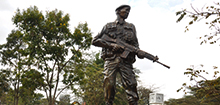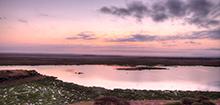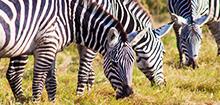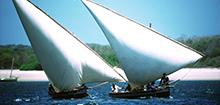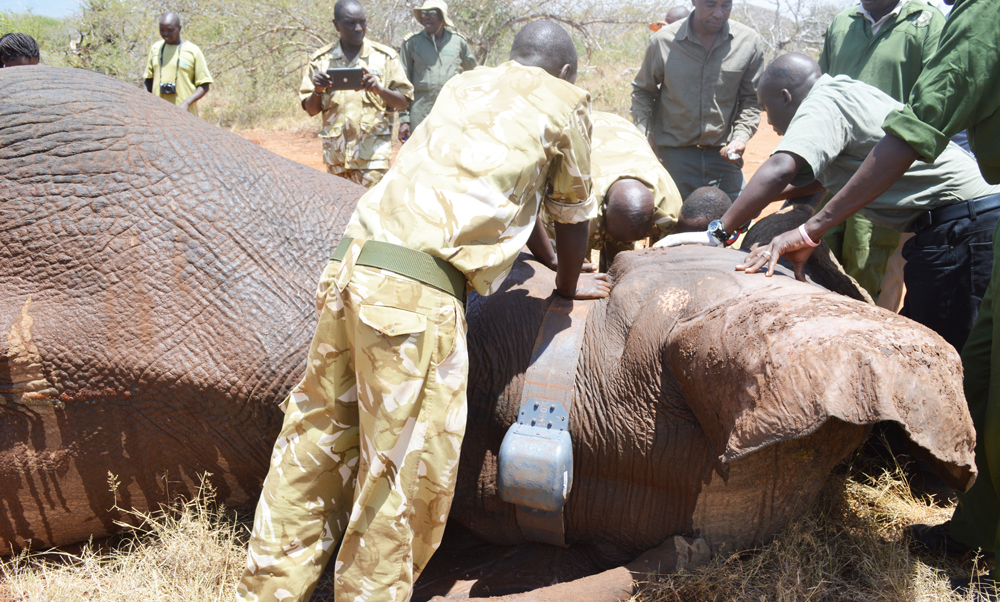

Press Release
ELEPHANTS USED TO HELP GUIDE NATIONAL PLANNING
10 elephants ranging near the Standard Gauge Railway will be fitted with advanced satellite radio tracking collars in the Tsavo ecosystem to be conducted from 14th to 17th March 2016. This is the start of a joint project initiated by the Kenya Wildlife Service (KWS) with Save the Elephants (STE) providing technical and logistical support. It aims to inform long-term planning, and to understand the effectiveness of wildlife crossings and their sustainability.
A 133 km section of the 483km high-speed railway passing through the Tsavo Conservation Area is being raised above the normal terrain levels and fenced off. The effect of this is that the largest National Park in Kenya, home to the largest population of elephants will be cut in two, making wildlife mobility dependant on the wildlife crossing structures put in place. Elephants from both sides of the railway will be collared to monitor scientifically how they adapt to the railway. The operation will be done mainly through aerial teams, with a KWS helicopter leading the darting operation, backed by KWS Veterinary and Capture staff and STE collaring specialists.
By generating detailed maps showing the intensity of use of the wildlife crossing structures the collared elephants will provide an enhanced understanding of connectivity in the Tsavo Ecosystem, which will in turn influence future infrastructural planning.
Dr. Benson Okita, STE’s Head of Monitoring says, “This project is the first of its kind in Kenya and indeed in Africa. Beyond basic land-use planning, it seeks to understand how elephant movements are influenced by a major infrastructural project. It is an excellent precursor for future planning in wildlife rich areas where development is set to take place, such as on the LAPSSET corridor in Northern Kenya.”
With more than half of global population growth between 2015 and 2050 expected to occur in Africa, infrastructural projects like this one will become commonplace. “As the use of elephant movement data to inform the planning process is refined, more precise spatial definition will allow the country to proactively secure space for wildlife as the Kenyan population grows,” says KWS Deputy Director of Species Conservation and Management, Mr. Patrick Omondi.
In addition to the building of the Standard Gauge Railway, new projects in the area include the construction of the Mombasa-Nairobi dual carriage way. With human population in these areas increasing and more farmlands appearing, the collaring of these elephants will also assist with detection of serial crop raiding elephants and identifying the macro causes of human elephant conflict.
Water availability, forage quality and quantity majorly determine the ranging patterns and migratory behaviour of elephants. Seasonal fluctuations in forage quality/quantity and water availability depict elephant migratory behaviour. In addition to seasonality, availability of these resources has been affected by land fragmentation from competing land-uses such as agriculture, human settlement and infrastructure development. To understand the effect of infrastructural development to elephant ranging patterns,
The collaboration between government and the private sector underscores the importance of pooling financial and intellectual resources to allow conservation and development to coexist. Incoming KWS Director General Mr. Kitili Mbathi intimated his interest to work closely with NGOs conducting research for the betterment of Kenya’s wildlife at a meeting in mid February 2016 between KWS and conservation NGOs in Tsavo.
The research element of the project will be conducted by graduate students under the joint supervision of KWS and STE. The project will build upon earlier research carried out by International Fund for Animal Welfare (IFAW), which was concluded in 2012.Others collaborating on elephant conservation include Tsavo Trust, Tsavo Conservation Group, and the David Sheldrick Wildlife Trust.
“The Standard Gauge Railway is perhaps the most important transport project Kenya has seen since the building of the first railway in the early 20th century,” says Dr. Iain Douglas-Hamilton, Founder of Save the Elephants. “If research such as this can help influence the way development is carried out, then we are truly on the path to securing a future for wildlife into perpetuity.”
Contacts

Kenya Wildlife Service
Patrick Omondi, OGW pomondi@kws.go.ke
Save the Elephants
Benson Okita-Ouma, PhD., MBS. okita@savetheelephants.org, info@savetheelephants.org
+254-720441178
More information:
See elephants crossing the highway perilously here. Footage by Tsavo Trust. https://www.youtube.com/watch?v=MUAjGmBU4G0
About Save the Elephants
Save The Elephants works to secure a future for elephants in Africa. Specializing in elephant science, STE provides scientific insights into elephant behaviour, intelligence, and long- distance movements and applies them to the challenges of elephant survival. Through our thriving Education and Outreach programs, we reach out to hearts and minds, making local people the true custodians of their own rich heritage. Our human elephant conflict mitigation research, especially through bee-hive fences, has successfully reduced the number of crop- raiding incidents and provides farmers with elephant-friendly alternative sources of income.
To battle the current surge in ivory poaching, our Elephant Crisis Fund is identifying and supporting the most effective partners in Africa and in the ivory consuming nations to stop poaching, thwart traffickers and end demand for ivory.
About the Kenya Wildlife Service
KWS is a state corporation with the mandate, run by a Board of Trustees, to conserve and manage wildlife in Kenya, and to enforce related laws and regulations.KWS undertakes
conservation and management of wildlife resources across all protected areas systems in collaboration with stakeholders. It is our goal to work with others to conserve, protect and sustainably manage wildlife resources, its habitats, and provide a wide range of public uses in collaboration with stakeholders for posterity. The Kenya Wildlife Service continues to strengthen the approach of science- driven wildlife conservation and management. These approaches include inter alia protecting and ensuring survival of particular endangered species and ensuring sustainable management of wildlife and their habitats for posterity.

